Hollywood Cemetery
Introduction
Text-to-speech Audio
Images
General George Picket (1825-1875), commander during the Mexican-American War and the Civil War.
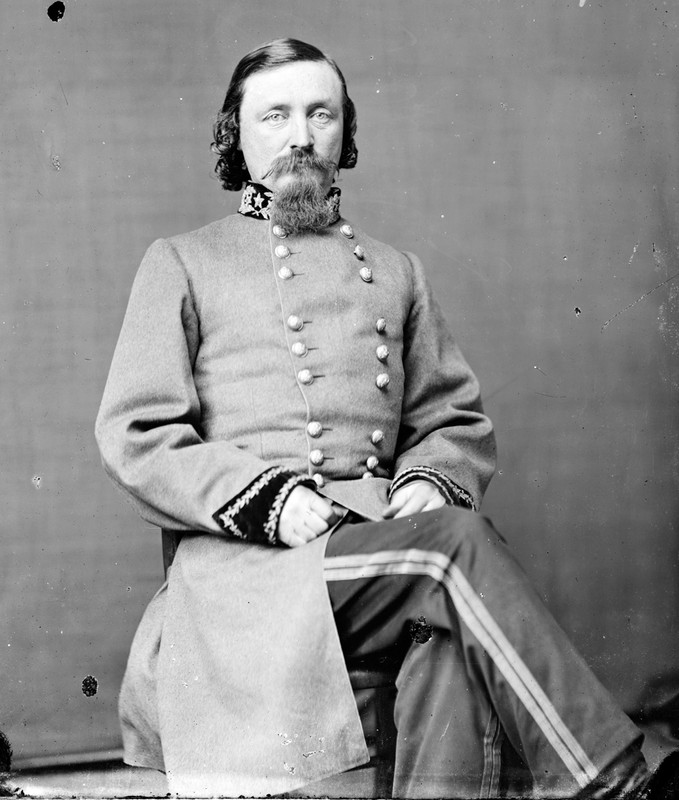
A view of the James River from the outer reaches of the cemetery.
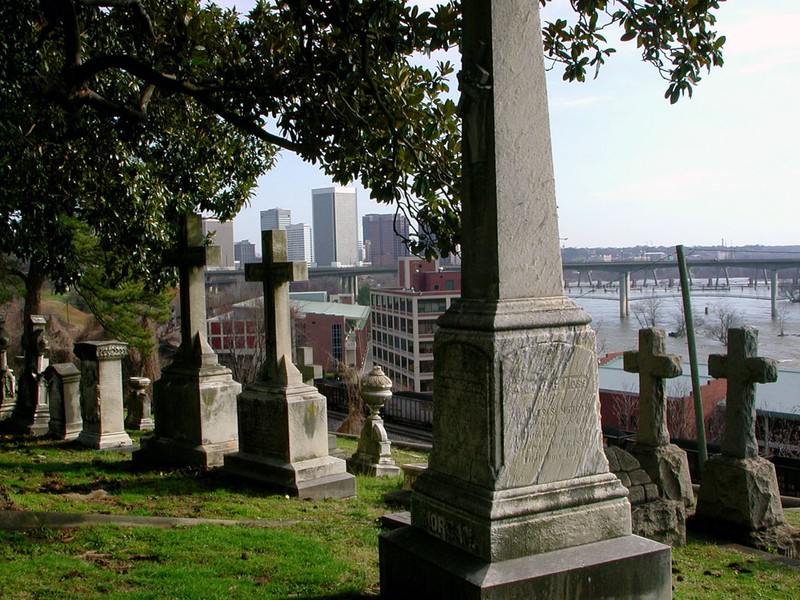
A 90-foot pyramid erected as a memorial to the 18,000 Confederate soldiers buried at Hollywood Cemetery.

Entrance to Hollywood Cemetery in 1895. Courtesy of Virginia Commonwealth University's (VCU) Libraries
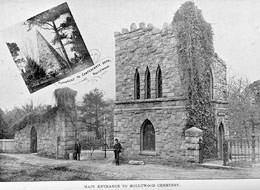
James Monroe Tome in 1920s (R) and as it looks today (L). Courtesy of VCU Libraries.
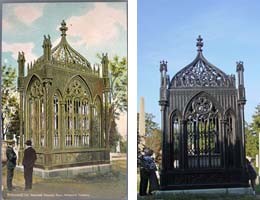
Birdseye view of cemetery. Red square toward the top-center of picture indicates locations of George Picket's gravesite
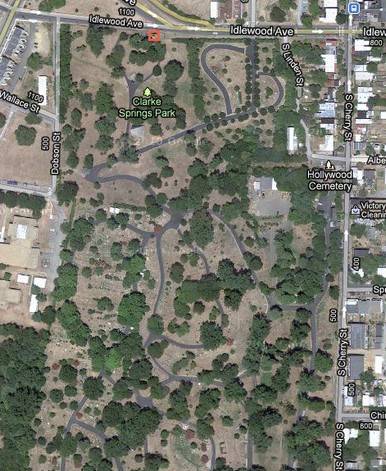
Backstory and Context
Text-to-speech Audio
The Hollywood Cemetery boasts a 90-foot stone pyramid in memorium to the 18,000 Confederate soldiers buried within. The monument was created by the Hollywood Memorial Association from donations. To date they have collected $18,000 dollars for renovations and upkeep of the premise. Also in the cemetery rests Confederate President Jefferson Davis and his family, complete with a life-size statue and the tombs or burial plots of Gen. George Pickett, Gen. J.E.B. Stuart, President James Monroe (tomb), and President John Tyler.
The cemetery is on the grounds once owned by William Byrd III (1728-1777), a member of the Virginia House of Burgesses. In the 1840s it was owned by the Harvie Family, who had plans for a family cemetery in this area of their land, known as "Harvie's Woods." A small cemetery was designed and was family-used until the end of the Civil War when the land was used to bury the Confederate dead. In 1869 the 90-foot pyramid was constructed to honor the dead buried there.
General George Pickett is best known for his leadership in the Civil War, specifically his place in the Battle of Gettysburg in 1863. Gen. Pickett finished last in his class at West Point Military Academy in New York (a blemish he shared with General George Custer) yet managed to lead companies in the Mexican-American War (1846-1848) and the Civil War (1861-1865). In the Mexican-American War, Gen. Pickett showed aptitude and emerged as a war hero.
During the Civil War, Gen. Pickett served as commander at the Battle of Seven Pines, the Battle of Williamsburg, and the Battle of Gaines’ Mill (where he was severely injured). It was at the Battle of Gettysburg, July 1-3, 1863, though that Gen. Pickett’s actions garnered his infamy. Gen. Pickett’s troops arrived two-days late to the battle and were ordered by General Robert E. Lee on July 3rd to assault the Union’s center-line. The result was retroactively called “Pickett’s charge,” a major tactical error that resulted in the capture, wounding, or death of half of Gen. Pickett’s men by heavy cannon and musket fire.
Gen. Pickett would later experience poor luck at the Battle of Five Forks in April of 1865. His defeat at that battle caused a major Confederate retreat. As a direct result of the battle’s outcome, General Robert E. Lee surrendered at Appomattox on April 9,1865 officially ending the Civil War.
